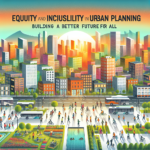Cartography, the art and science of creating maps, has been an essential tool for civilizations throughout history. From guiding explorers to new lands and creating accurate representations of the world, maps have played a crucial role in shaping our understanding of the world. While traditional uses of cartography may come to mind, such as navigation or land surveying, the field has evolved to encompass a wide range of surprising uses in today’s world. Charting new horizons, cartography continues to prove its relevance and versatility in modern society.
One of the most prominent uses of cartography in today’s world is in the field of urban planning and development. With the rise of cities and urbanization, planners rely on maps to visualize and analyze various factors such as population density, transportation networks, and land use. By using geographic information systems (GIS) and other mapping technologies, urban planners can create detailed maps that help them make informed decisions about development projects, transportation infrastructure, and public services.
In addition to urban planning, cartography is also being used in environmental conservation and management. Conservationists utilize maps to track wildlife populations, identify important habitats, and plan protected areas. By mapping out ecological landscapes, conservationists can ensure the sustainable management of natural resources and the preservation of biodiversity. Additionally, maps play a crucial role in monitoring and mitigating the impacts of environmental disasters such as wildfires, hurricanes, and deforestation.
Furthermore, cartography has found its way into the realm of healthcare and public health. By mapping the spread of diseases, healthcare professionals can identify patterns, trends, and risk factors that inform prevention and treatment strategies. Epidemiologists use maps to track outbreaks of diseases such as COVID-19 and malaria, and to visualize the distribution of healthcare resources to underserved communities. This use of cartography in healthcare has proven to be invaluable in improving public health outcomes and saving lives.
Moreover, cartography has also made significant contributions to the fields of business and marketing. Companies use location-based data and mapping tools to identify market trends, target specific demographics, and optimize supply chain logistics. By visualizing consumer behavior and market segmentation on maps, businesses can make strategic decisions that drive growth and profitability. From retail site selection to targeted advertising campaigns, cartography plays a key role in helping businesses stay competitive in today’s fast-paced marketplace.
Additionally, technology has revolutionized the way we create, analyze, and interact with maps. The advent of web mapping services and mobile applications has made maps more accessible and interactive than ever before. Users can now access real-time traffic data, route planning services, and location-based services on their smartphones, making navigation and exploration easier and more convenient. This democratization of mapping technology has opened up new possibilities for innovation and collaboration across various industries.
Furthermore, cartography has also been instrumental in disaster response and humanitarian aid efforts. During natural disasters such as earthquakes, hurricanes, and flood, emergency responders rely on maps to coordinate rescue missions, assess damages, and deliver aid to affected communities. By mapping out affected areas and prioritizing resources, responders can efficiently deploy assistance and save lives. The use of cartography in disaster management highlights its critical role in emergency preparedness and response efforts.
In conclusion, the surprising uses of cartography in today’s world demonstrate the enduring relevance and versatility of this age-old practice. From urban planning and environmental conservation to healthcare and business, maps continue to inform decision-making, drive innovation, and shape our understanding of the world around us. As technology advances and new challenges arise, cartography will undoubtedly play a crucial role in charting new horizons and navigating the complexities of our interconnected world.


